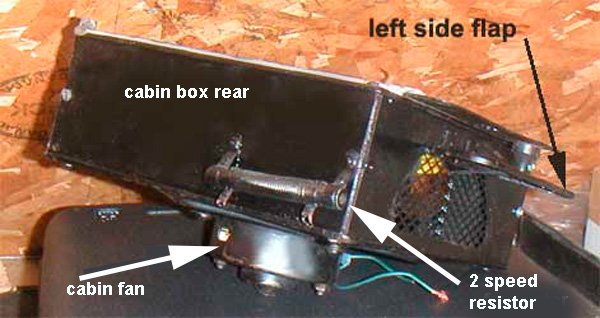
 the bulkhead in the engine compartment. compartment. Availability: Parts for this system have become
extremely hard to find or replace. Be patient and look on
ebay.co.uk or .ie. I have also seen the cores at Europarts and Holden.
the bulkhead in the engine compartment. compartment. Availability: Parts for this system have become
extremely hard to find or replace. Be patient and look on
ebay.co.uk or .ie. I have also seen the cores at Europarts and Holden.| WATCHPOINT: The
most common things that go wrong: 1. Morgan has used a very awkward shut off valve for decades. It is cable operated and the necessary twists and turns required, arrive at the thingie which is installed weirdly to work at all. Yet without a shut off valve, (a less-than-brilliant cost saving for the 1990s cars) the cabin is constantly hot as the cabin heater matrix is constantly hot. Of course, even without the heater fan on, the rush of air pushes the hot air into the system, the matrix and into the cabin. (sad sigh) I can think of two solutions. My friend Lance tapes a plate to block air inflow into the heater on the bulkhead. Or try the one I describe below. Works a treat! 2. Your matrix has not been flushed for too long and is partially block or gone south, 3. Your cabin heater flaps are closed. 4. Your hoses to the windscreen demisters have dislodged. Easy to check and sort. 5. Your cabin heater fan has slipped its connections. |
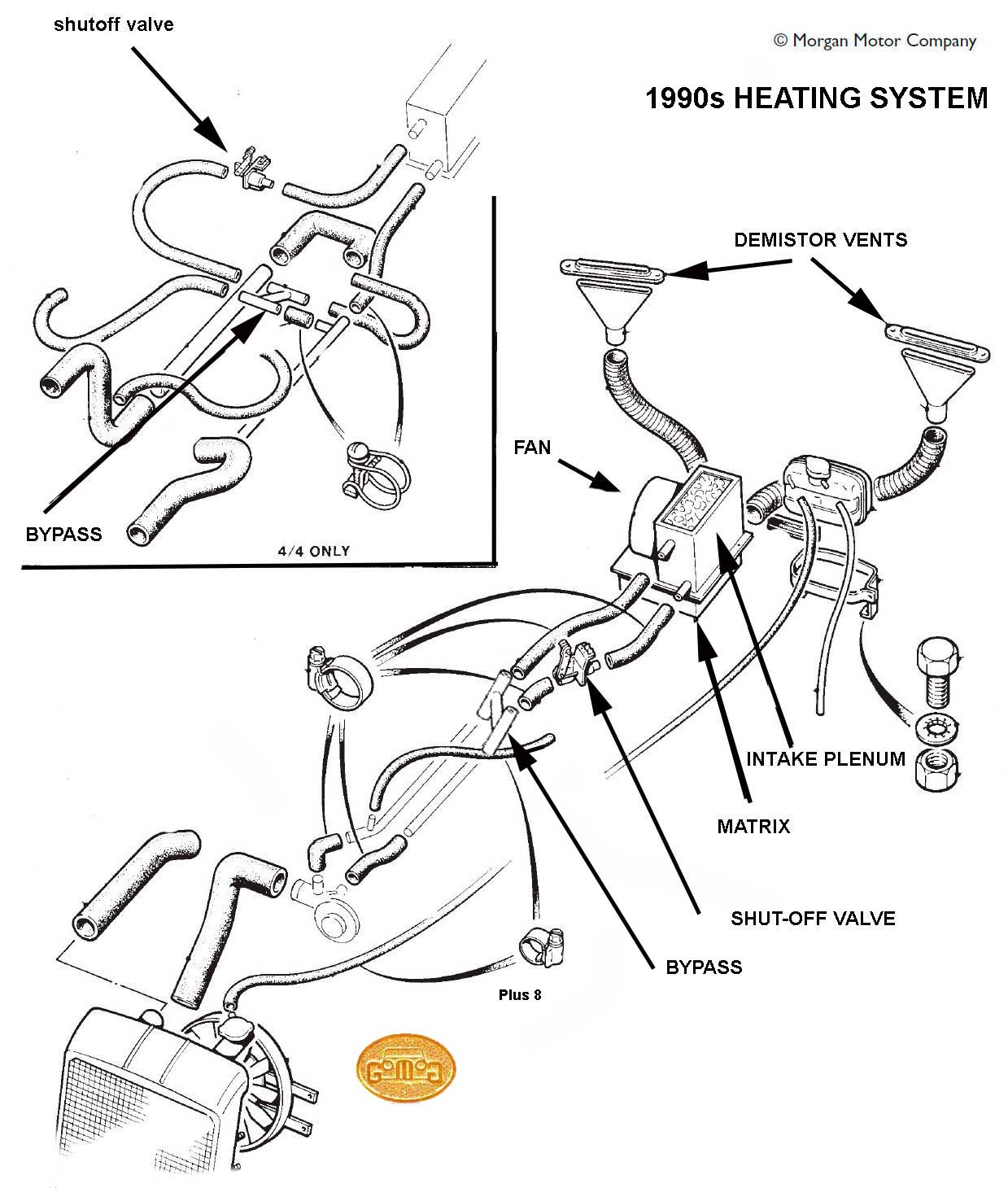 with circuit
boards and LR column). Those that charged with
component supply, base their purchase decisions on price, rather than
the more important priorities of suitability, durability and the
assurance of continued supply. This cabin heater is another example. It
functions poorly, it takes up too much space and the supplier quickly
went bankrupt eliminating the supply of repair parts from 1988 on.
with circuit
boards and LR column). Those that charged with
component supply, base their purchase decisions on price, rather than
the more important priorities of suitability, durability and the
assurance of continued supply. This cabin heater is another example. It
functions poorly, it takes up too much space and the supplier quickly
went bankrupt eliminating the supply of repair parts from 1988 on. 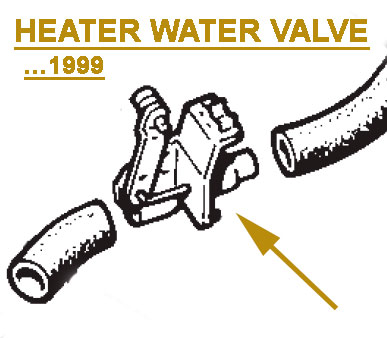 Decades
ago, in the early 1950s, Morgan began offering cabin-heating and
windscreen-demisters as an option. That was still in
the era where the Morgan factory designed and fashion most things
in house and mechanical expertise was very high.
Decades
ago, in the early 1950s, Morgan began offering cabin-heating and
windscreen-demisters as an option. That was still in
the era where the Morgan factory designed and fashion most things
in house and mechanical expertise was very high. 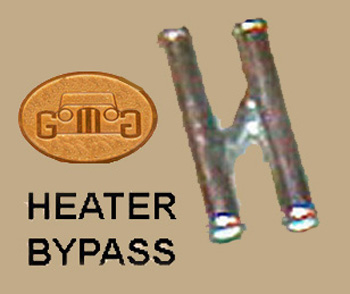 They immediately
realized that a shut-off valve was necessary for the system,
not merely turning off the forced air (the cabin fan) but also the
heat source of the hot coolant flowing through the cabin heater matrix
(aka the little radiator) that sits under the cabin air plenum on the
bulkhead. They fitted a cable-operated shutoff valve on the
bulkhead. The valve is/was an awkward affair made for anything but the
use it was put to here..but it worked..a bit. The cable is run through
a tortuous routing making it stubborn and binding..but coming from
the era of choke cables and clutch cables and many others, it was
understandable. and the theory for its necessity eminently logical.
They immediately
realized that a shut-off valve was necessary for the system,
not merely turning off the forced air (the cabin fan) but also the
heat source of the hot coolant flowing through the cabin heater matrix
(aka the little radiator) that sits under the cabin air plenum on the
bulkhead. They fitted a cable-operated shutoff valve on the
bulkhead. The valve is/was an awkward affair made for anything but the
use it was put to here..but it worked..a bit. The cable is run through
a tortuous routing making it stubborn and binding..but coming from
the era of choke cables and clutch cables and many others, it was
understandable. and the theory for its necessity eminently logical. 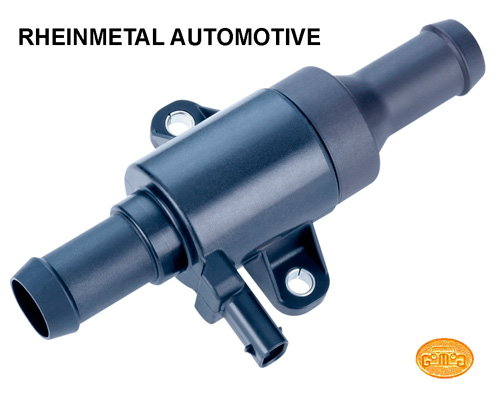
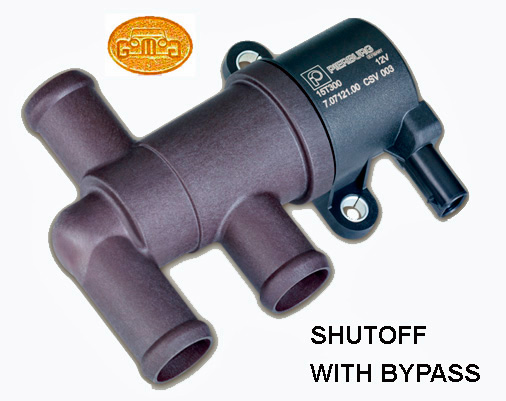 It
is also easy matter to eliminate the awkward and unhappy
cable-operated
used by earlier Morgans (pre-1999) by substituting an inexpensive
($25-40) electrical solenoid shut-off valve made for purpose. Many
automotive designers have faced the same issues as Morgan (duh!)
come
up with the same conclusions that earlier Morgan designers have.
Coolant shut-off valves are used by Audi, Ford,
GM,Mercedes, Jeep, BMW,
Volkswagen....etc. Over the decades, they have all come up with easier,
more durable and effective heater shutoff valves, often incorporating a
bypass.
Buy any of the many available that suits you and your hoses. It is a
simple matter to buy hose adapters and your nearest plumbing store.
It
is also easy matter to eliminate the awkward and unhappy
cable-operated
used by earlier Morgans (pre-1999) by substituting an inexpensive
($25-40) electrical solenoid shut-off valve made for purpose. Many
automotive designers have faced the same issues as Morgan (duh!)
come
up with the same conclusions that earlier Morgan designers have.
Coolant shut-off valves are used by Audi, Ford,
GM,Mercedes, Jeep, BMW,
Volkswagen....etc. Over the decades, they have all come up with easier,
more durable and effective heater shutoff valves, often incorporating a
bypass.
Buy any of the many available that suits you and your hoses. It is a
simple matter to buy hose adapters and your nearest plumbing store.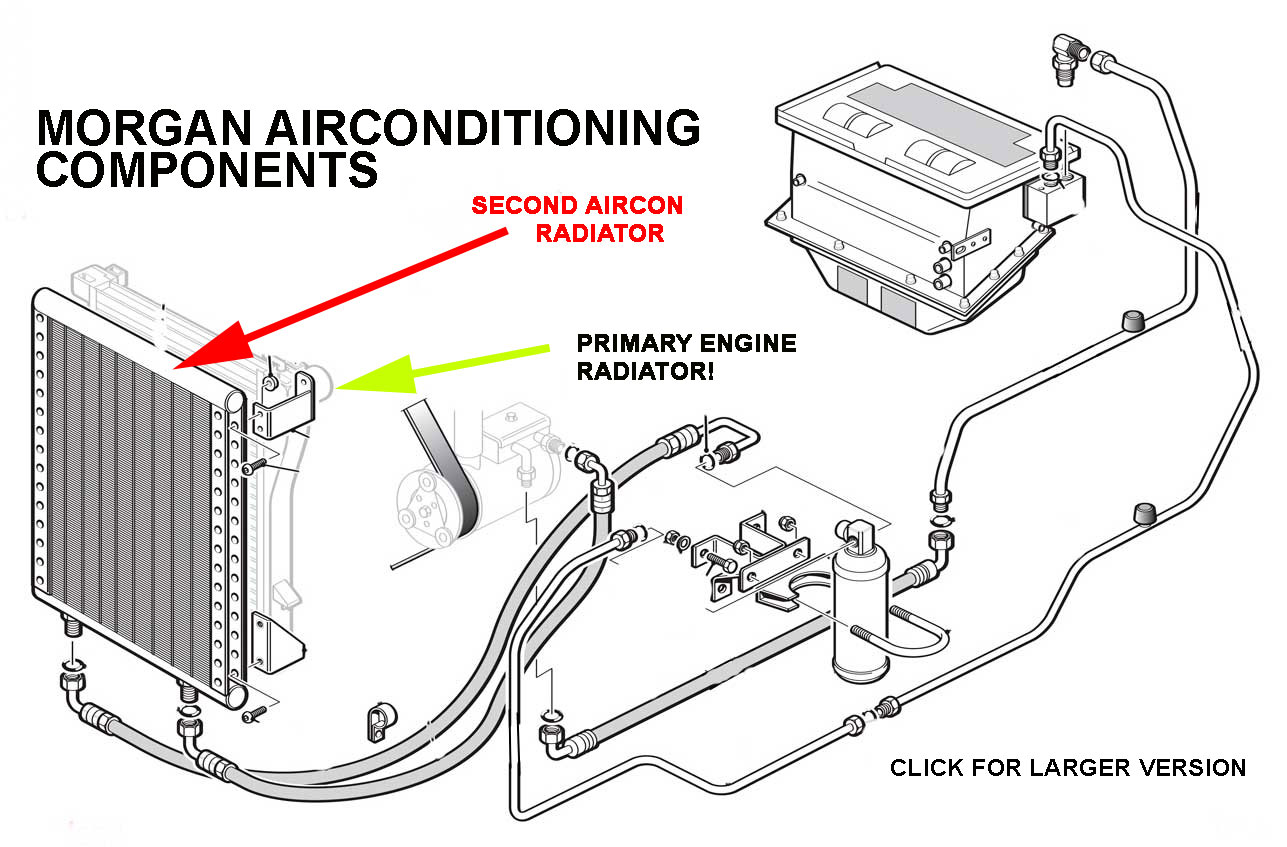 cabin heat much thought unless I am in someone else's Morgan and notice
the heat I used to have 25 years ago. But the international Roadster Group got me
interested enough to examine
the MMC climate system problems.
cabin heat much thought unless I am in someone else's Morgan and notice
the heat I used to have 25 years ago. But the international Roadster Group got me
interested enough to examine
the MMC climate system problems.